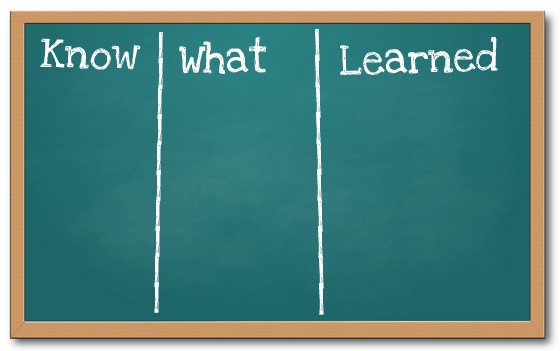
If you’re looking for a different teaching approach on a Sunday morning, The K-W-L Chart just may be the way to go. The K-W-L Chart is a traditional teaching strategy that is effective in determining a student’s current knowledge, generating an interest in subject matter, and recalling valuable lessons learned. It can be utilized to teach any type of Biblical content.
The K-W-L Chart is a visual tool that can be easily drawn up on a blackboard, white board, or a poster for later reference purposes. It is a simple chart made up of three columns. On the left, a column is designated as “K” for KNOW. The middle column is “W” for WHAT YOU WOULD LIKE TO LEARN. On the right, a column is designated as “L” for WHAT YOU LEARNED.
Before a lesson is presented, students brainstorm what they KNOW about a subject or Biblical account. This is a good preliminary assessment tool of your students’ basic knowledge of the subject. All of these facts would be compiled into the first column under “K,” WHAT WE KNOW. For example, if you are studying the life of Esther, the students might say:
- She was a queen
- She helped save people
- She starred in a Veggie Tales movie
- She is a book in the Old Testament
- She was brave
- There was someone named Haman involved with her life.
Following the brainstorming session, students ask questions about the topic or account. These questions will be written under the “W” column and include “WHAT WE WOULD LIKE TO LEARN.” This column, in particular, generates interest in the subject because students are inherently inquisitive. In addition, it gives them a framework for the lesson and allows them to be active listeners, engaged in finding their own answers.
If we follow along with our example, student questions may include:
- How did Esther save her people? Was what she did dangerous?
- Was she really in a beauty pageant?
- Who is Haman after all?
- What does this have to do with our lives today?
At this point, the teacher would teach the bulk of the lesson. He or she could use any manner of teaching and may choose to read an account out loud, utilize reading circles, act it out, perform a readers’ theatre, use puppets, watch a movie or clip, etc.
Once the lesson is presented, the “L” component of the chart is composed and students brainstorm “WHAT WE LEARNED.” This is a great way to reinforce concepts taught and provides for meaningful discussion. It may be helpful to write down the answers in very brief statements next to the corresponding questions. Answers, in this case, may include:
- The Jewish people were going to be killed. Esther foiled the plan by bravely going before the King.
- Yes, she was in a beauty contest. The King had to find a replacement Queen and she was selected.
- Haman was the Prime Minister of Persia. He wanted all of the Jews to be killed.
- Sometimes we have to speak up for what we believe in; having faith in Jesus takes courage; our age doesn’t matter – God uses anyone who is willing and humble to accomplish His will.
And there you have it! The K-W-L Chart, which can be easily adapted for any Bible lesson. Let us know if you have incorporated this particular teaching strategy into your ministries and how.
